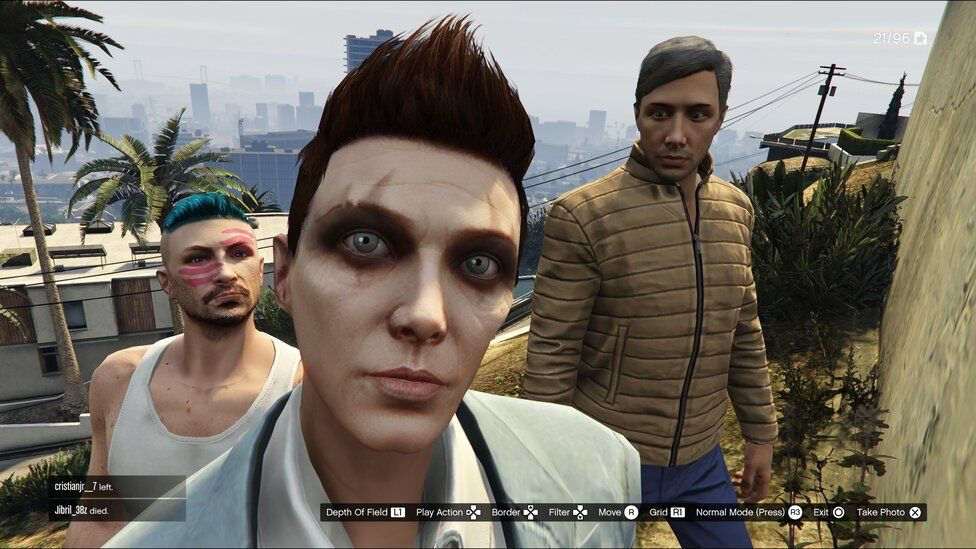Portrait of the artist: Breaking the code
- Brock Kingsley
- Jan 9, 2024
- 3 min read

Conversations around art too often devolve into well-worn tropes, some variation of: what does this mean, or what is the artist trying to say? Worse still is the question about the usefulness of art, the constant need to prod art and artists to justify themselves—what is any of this good for; what is it helping? These are intellectually silly questions, and I’m thankful that, for the most part, Breaking the Code, a biographical documentary on the artist Vernon Fisher, sidesteps them. Instead, filmmaker Michael Flanagan, provides us with a loving portrait of the man behind the works. While Flanagan is not ignorant of the questions of usefulness, he allows Fisher to be front and center, to talk about his process, his life and experiences, and how they interact to produce beautiful works that provide endless engagement.
Recently, I was able to attend a screening of Breaking the Code, at the Modern Art Museum of Fort Worth. While I was somewhat familiar with Fisher’s work—especially the blackboard paintings and some of the early target paintings—I didn’t realize he was from and lived and worked in Fort Worth, TX. I am a reluctant denizen of the same place, and my reluctance and ignorance say more about me than they do about the city. I was one of the only ones at the screening to not know this. Conversations before and during the film pointed this fact out. One man commented he was high school classmates with Fisher and during the screening would comment on people and places he recognized.
The occasion for story was much by happenstance. While in grad school working towards an MFA in documentary filmmaking, Flanagan attended a small retrospective of Fisher’s work. Words and Pictures brought together Fisher’s painting and sculptures from the 1980s to then present day. Flanagan was “blown away” and started a 3-year process that would culminate in Breaking the Code.
The film is gorgeous—the composition, lighting, color coding, the editing to piece together a narrative structure. Breaking the Code started as Flanagan’s thesis film, but after receiving funding in 2021, moved to feature length.. At first, Fisher was reluctant to participate, but had no qualms with Flanagan pursuing the film. But once Flanagan got started and Fisher could see the work he was doing, the direction he was going, he was on board. For a first film, Breaking the Code is slick (in a good way), well-constructed, and accomplished. And it marks Flanagan as a filmmaker to keep an eye on.

Something Breaking the Code manages to convey is the idea that one not need live in a perceived art Mecca to be creative and successful. The work is the work and it can be made wherever you happened to find yourself. If life is material, well, life is happening all around you whether you’re in New York, Los Angeles, Paris, or Fort Worth, TX—and whether you like it or not. In the film, Michael Auping, former Chief Curator at the Modern in Fort Worth, comments “there are any number of really great regional artists; artists that don’t leave town.” Maybe Fisher always understood that, or maybe it was hearing a professor/mentor telling him it was okay to look inward.
Fisher started his academic and by extension artistic career as a literature major. In the film, he references T.S. Eliot’s “The Love Song of J. Alfred Prufrock,” a poem that follows the musings of its speaker in a stream of consciousness mode. “Prufrock” is a poem of anguish, a poem whose speaker epitomizes the frustrations and inertia of the “modern man.” The poem is also a lament. Prufrock, the speaker, bemoans lost opportunities, physical and intellectual (creative) stagnation. Prufrock is haunted by “an overwhelming question” that he’s scared to ask for fear of rejection: what happens when you put yourself out there—for whatever reason—and are roundly ignored? But to recognize something of oneself in this poem, the way Fisher did, is, in fact, to rail against Prufrock and his stagnation—to refuse his fate.
Fisher was going to do the work no matter where he was. And he wasn’t going to care if you thought it useful or not, or if your interpretation of the work aligned with his own. Flanagan as a filmmaker understands this, and he is confident and clear in vision. He understands how to get out of the way, that his subject holds our attention as much as he holds the center of the film. More than that, Flanagan too, understands how to seemingly get the best from Fisher. Watching Breaking the Code, I imagine Flanagan just let him talk, just let him hold the space until he had said all he had to say.
Brock Kingsley is a writer, artist, critic, and educator living in Fort Worth, Texas. His work has appeared in publications such as Brooklyn Rail, Paste Magazine, Tahoma Literary Review, Waxwing, and elsewhere. He is a regular contributor at the Chicago Review of Books.



Comments